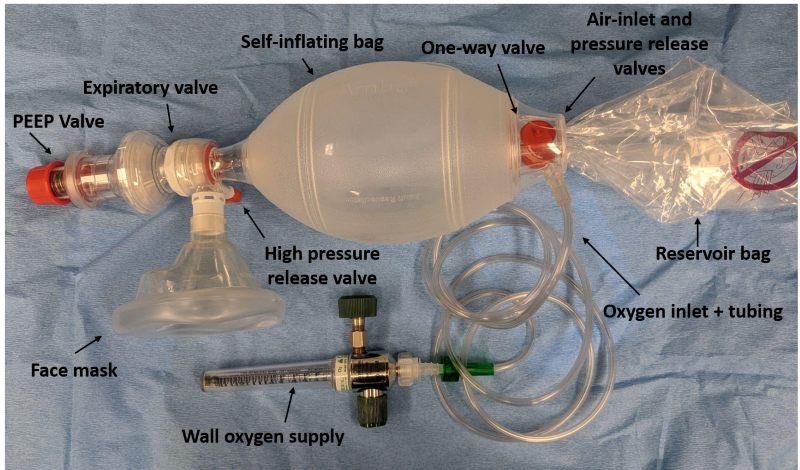Positive End-Expiratory Pressure (PEEP)
THIS PROCEDURE APPLIES TO: Patients for whom adequate oxygenation cannot be achieved by ventilations with a bag-valve mask alone due to alveolar collapse, decreased lung compliance, pulmonary edema, near drowning, cardiac arrest or other condition causing poor oxygen transfer in the alveoli.
EXCLUSION CRITERIA: Pneumothorax
PROCEDURE
- Attach PEEP valve to the bag-valve mask.

- Begin ventilating the patient with PEEP set at 5 – 10 cm H20.
- Increase or decrease PEEP in increments of 2 – 3 cm H20. Usually, PEEP settings of 5 – 10 cm H20 are adequate. The goal of titration is to achieve the level of PEEP associated with maximal oxygenation while avoiding adverse effects induced by PEEP.
- After each adjustment of PEEP, assess the effects on oxygenation by considering such things as waveform capnography, pulse oximeter measurements, the patient’s use of accessory muscles to breathe, skin color and moisture, changes in heart rate, blood pressure and sensorium.
- Watch for development of pneumothorax and decreased cardiac output caused by increased pressure in the airways.
